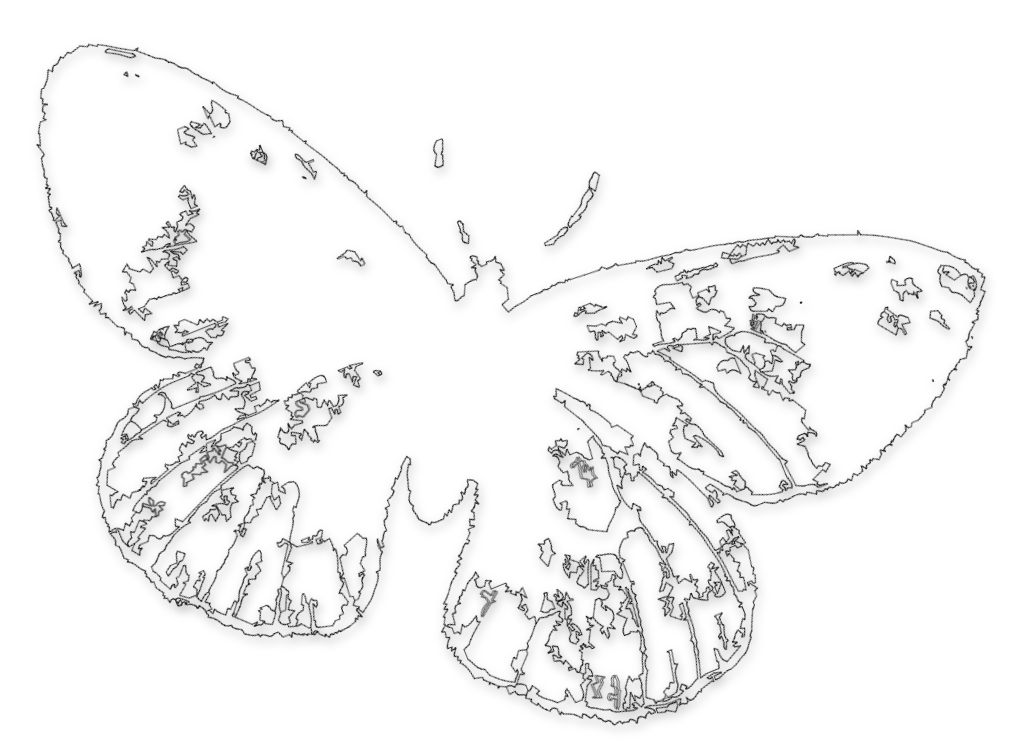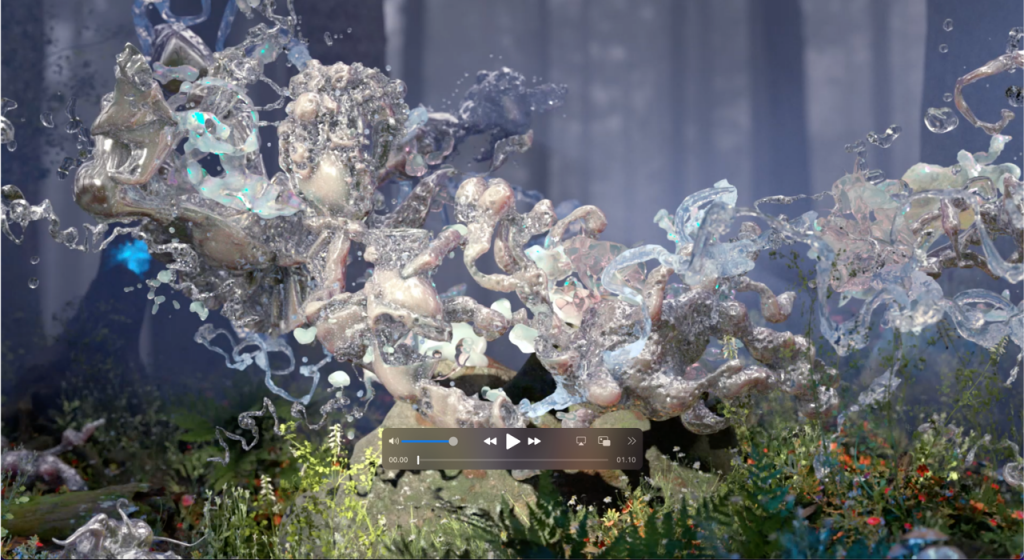The remembering of Mnemosyne
Artist
Ida Lissner
Format
Video
Year
2021
The work presents the materialisation of imagining something after its disappearance. It questions what happens to a species after it is gone; What stories does it leave behind? How do we remember it?
Mnemosyne, or Parnassius mnemosyne, is an endangered butterfly species that is extinct in many areas due to the destruction of its forest habitats. The species is named after the Greek goddess of memory, Mnemosyne, whose name derives from the Greek word mnēmē, which means “remembrance” or “memory”. The continuing disappearance of Parnassius mnemosyne could prove that the species is already the memory it was foretold to be.
The remembering of Mnemosyne comes to life using Computer Generated Image and 3D-rendering, tools that enable us to imagine the unknown and make inaccessible stories and places available to vision. By blurring the lines between the familiar and foreign, reality and dream, we might still be able to see the Mnemosyne carry the light in the forest glade, or at least the memory of it.
Ida Lissner
Website
newgarden.services
Ida Lissner is a digital artist working with worldbuilding and the relationship between nature and technology through computer generated image, 3D animation and rendering. She creates digital sanctuaries of interconnectedness that attempt to reimagine our relationship to the natural world. The small worlds – and the creatures that inhabit them – come from a profound fascination with the more-than-human communities that surround us, but also from a feeling of loss knowing that we as humans are changing the natural world irreversibly. These virtual places of layered narratives are mimicking the experienced past and nature as we know it (or remember it) while also imagining a parallel world (or alternative future) where the ghosts of human past still haunt but nature somehow thrives.
Parnassius mnemosyne

Parnassius Mnemosyne is white with two black spots on the anterior wings and gray border along the posterior edge of the posterior wings. With age, a lot of dandruff is lost, and Mnemosyne can therefore become almost transparent.
Load more +
Mnemosyne has not been registered in Denmark since 1961. The species’ closest habitat is in southern Sweden, but as it has been in great decline in Denmark, the probability of it re-immigrating must be assessed as low.
Mnemosyne is listed as disappearing on the Danish red list in 1997.
The threat to the species has been
- overgrowth of habitats
- changed forestry
If mnemosyne is to have the opportunity to re-immigrate and establish itself in Denmark, it is necessary that there are suitable habitats. There should therefore be clearings in the deciduous forests and abundant occurrence of larch spore plants. Cattle grazing on suitable areas in the deciduous forests will be able to help create the necessary clearings.
REFERENCES
https://mst.dk/natur-vand/natur/artsleksikon/insekter/mnemosyne/https://www.naturbasen.dk/art/759/mnemosyne
